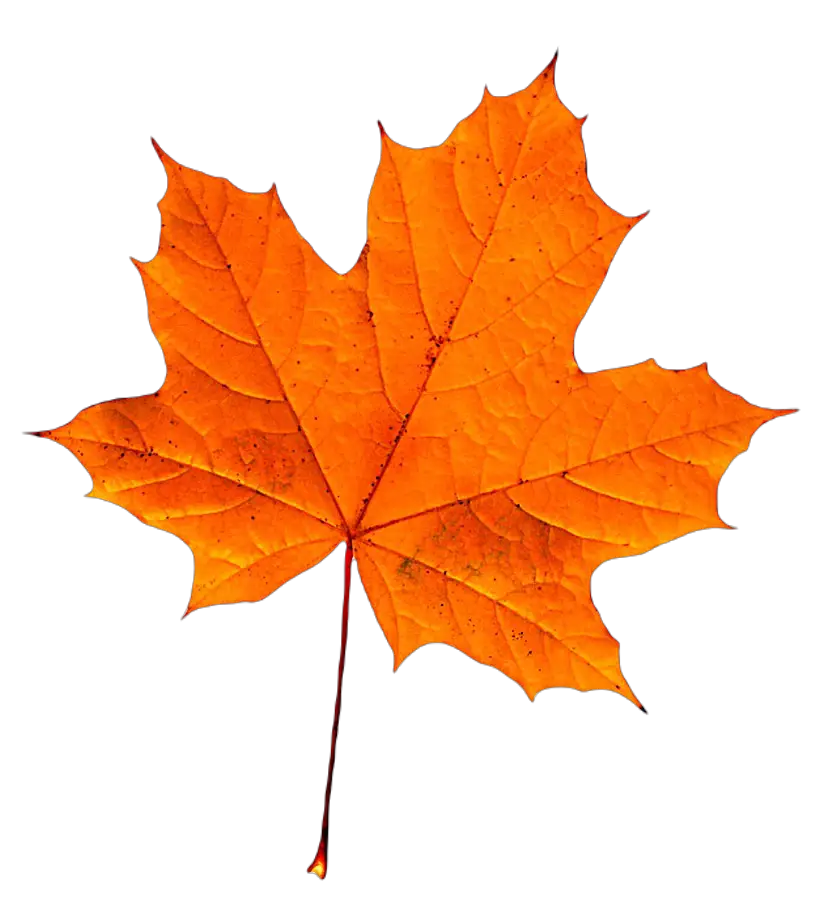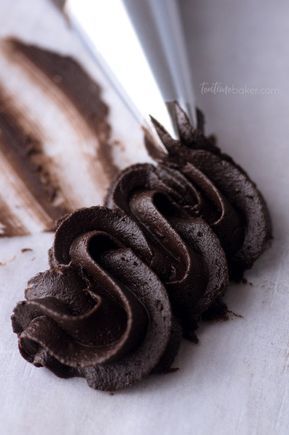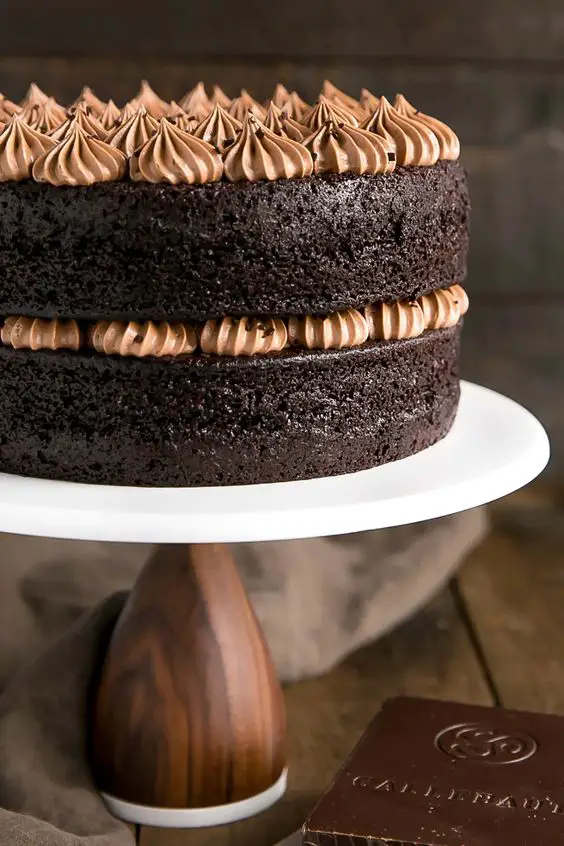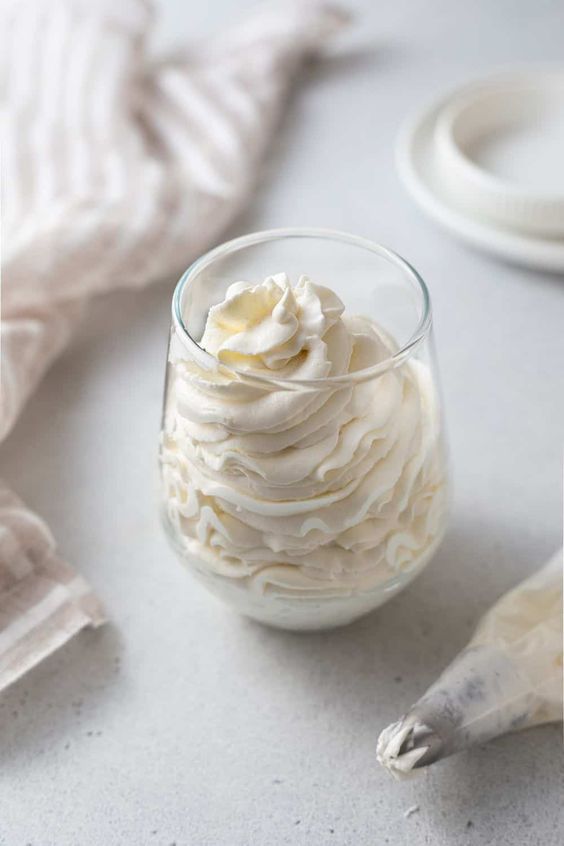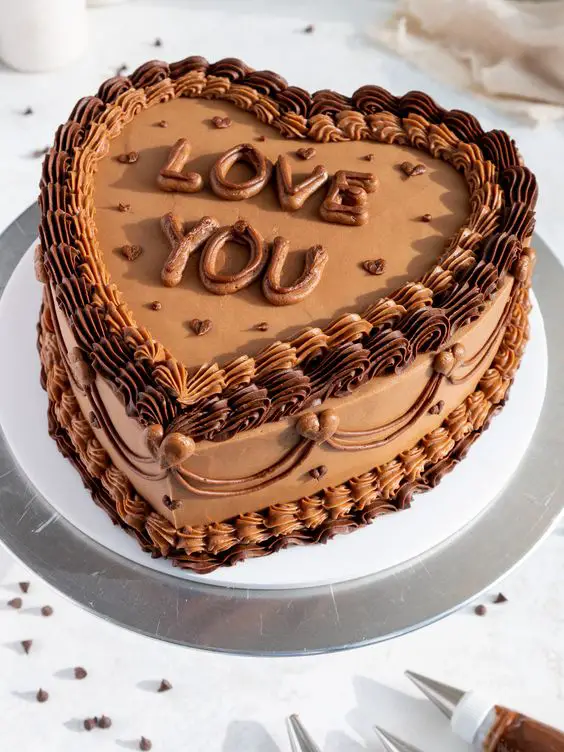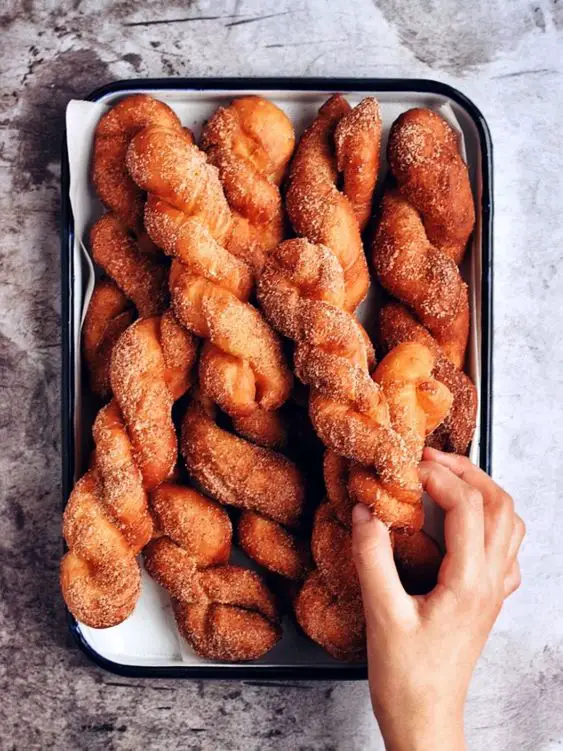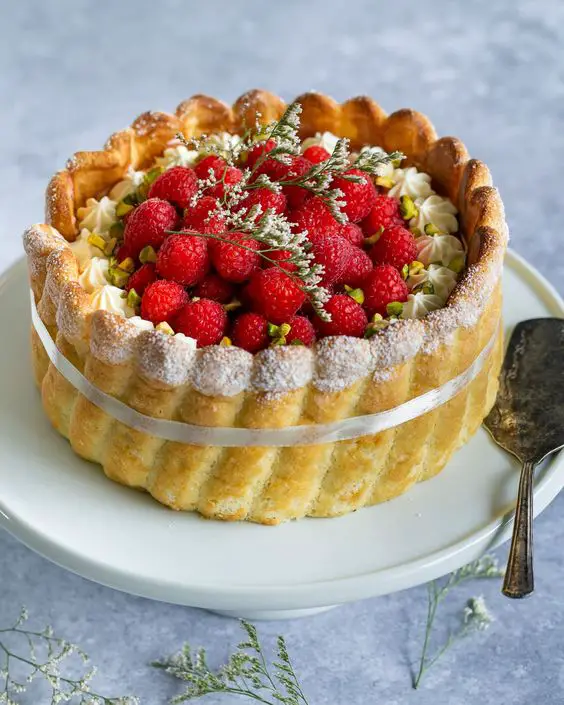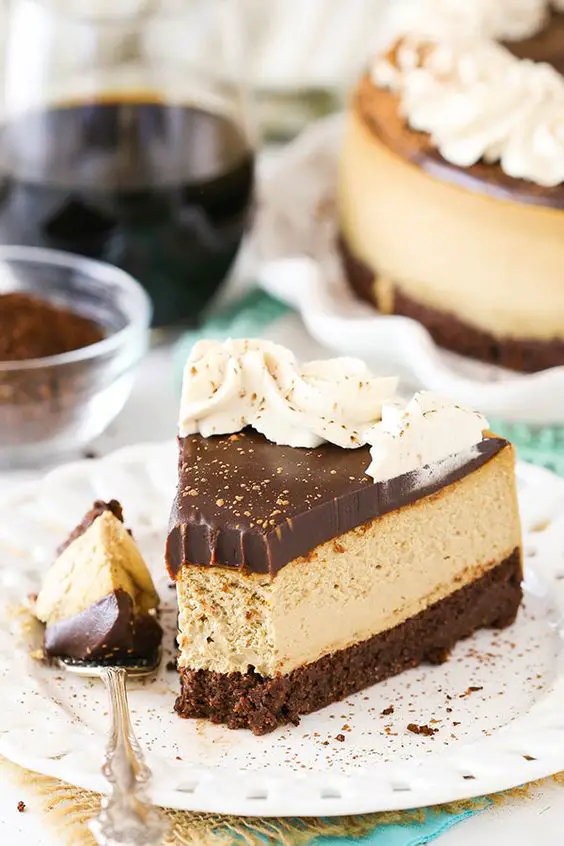Black buttercream frosting is a striking and bold twist on traditional buttercream, known for its rich, dark color and intense chocolate flavor. This decadent frosting is perfect for adding a dramatic touch to cakes, cupcakes, and other baked treats. Whether you’re looking to create a mysterious and elegant dessert or want to embrace a dark and dramatic theme for a special occasion, black buttercream frosting is a go-to choice that not only looks impressive but also delivers a deliciously indulgent experience for your taste buds. In this introduction, we’ll explore the basics of making and using black buttercream frosting, as well as some creative ways to incorporate it into your baking repertoire.
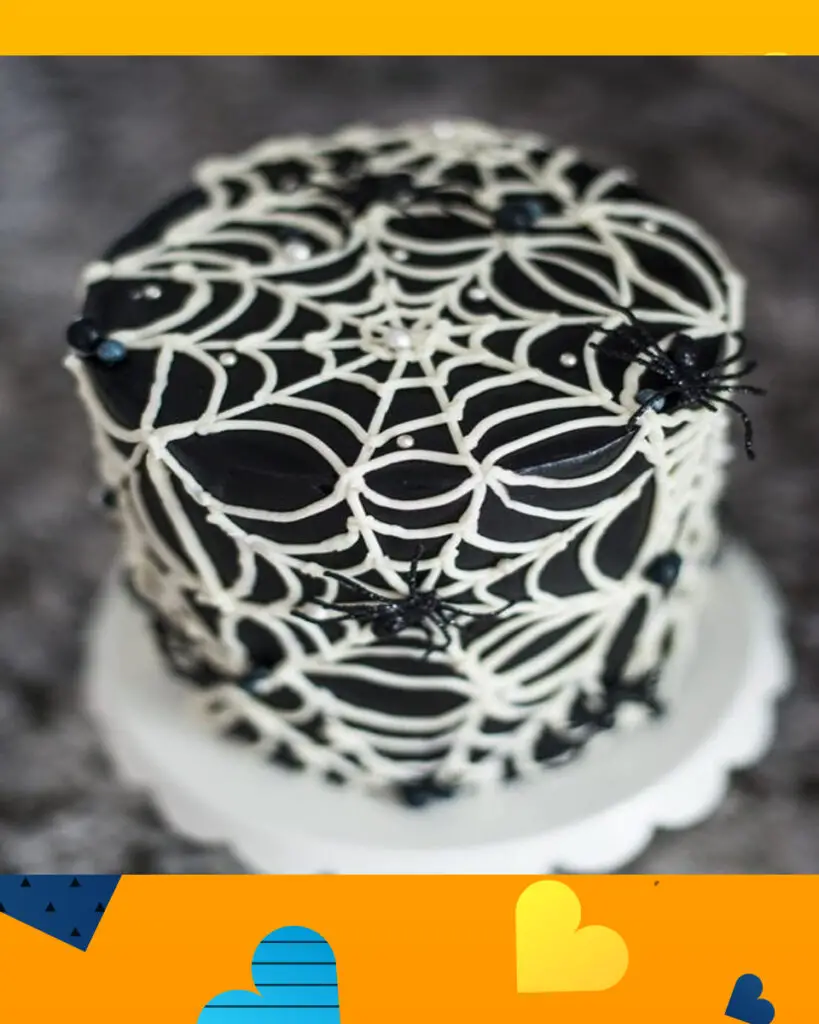
What is Black Buttercream Frosting?
Black buttercream frosting is a unique and visually striking type of frosting used to decorate cakes, cupcakes, and various other baked goods. Unlike traditional white or pastel-colored buttercream, black buttercream frosting is characterized by its deep, intense black color. This bold and dramatic appearance is achieved using food coloring or natural ingredients like activated charcoal.
The primary base of black buttercream frosting is butter and confectioners’ sugar, giving it a creamy and smooth texture. To achieve the rich black hue, you typically add black food coloring gradually until the desired shade is reached. Some bakers also opt for natural food colorings or powdered activated charcoal to achieve a black color without relying on artificial dyes.
In terms of flavor, black buttercream frosting can be tailored to your preference. You can make it with a classic vanilla flavor, add cocoa powder for a chocolate twist, or incorporate other flavorings like coffee, espresso, or even fruity extracts to create unique tastes that complement your dessert.
Black buttercream frosting is not only visually striking but also versatile in terms of decorating possibilities. It’s often used for creating elegant and dramatic cakes for special occasions like weddings, Halloween, or themed parties. It provides a stunning contrast when paired with other brightly colored decorations or edible metallic elements, making your baked creations stand out.
Overall, black buttercream frosting adds a touch of sophistication and intrigue to your desserts, making it a favorite choice for those looking to make a bold and memorable statement with their confections.
My black buttercream frosting tastes bitter. How can I fix this?
If your black buttercream frosting tastes bitter, it’s likely due to the cocoa powder or black food coloring you’ve used. Here are some steps to help reduce the bitterness and improve the flavor of your frosting:
- Add more sweetness: The bitterness may be countered by adding more confectioners’ sugar (powdered sugar) to sweeten the frosting. Start by adding small amounts at a time, mixing well after each addition, until the bitterness is balanced to your liking. Be careful not to add too much sugar, as it can affect the frosting’s texture.
- Use a different brand of food coloring: Some black food colorings can have a stronger and more bitter taste than others. Try switching to a different brand or type of food coloring known for its milder flavor. Gel or powdered food coloring is often preferred for achieving deep black colors without altering the taste as much.
- Adjust the cocoa powder: If your recipe includes cocoa powder, which can also contribute to bitterness, try using a high-quality cocoa powder or reducing the amount slightly. This can help maintain a chocolate flavor without overwhelming bitterness.
- Balance with other flavors: Incorporate complementary flavors to balance out the bitterness. For example, you can add a small amount of vanilla extract, coffee extract, or a flavored liqueur to enhance the overall taste of the frosting.
- Consider natural alternatives: If you’re open to alternatives, you can use natural ingredients like activated charcoal to achieve a black color without the bitterness associated with some food colorings. Be sure to use food-grade activated charcoal, and start with a small amount, gradually adding more until the desired color is achieved.
- Taste and adjust: Continuously taste your frosting as you make adjustments. This way, you can fine-tune the sweetness and flavor until it aligns with your preferences.
Remember that the ideal sweetness and flavor balance can vary from person to person, so don’t hesitate to adjust the frosting until it suits your taste. With a bit of experimentation, you can create a delicious and visually stunning black buttercream frosting.
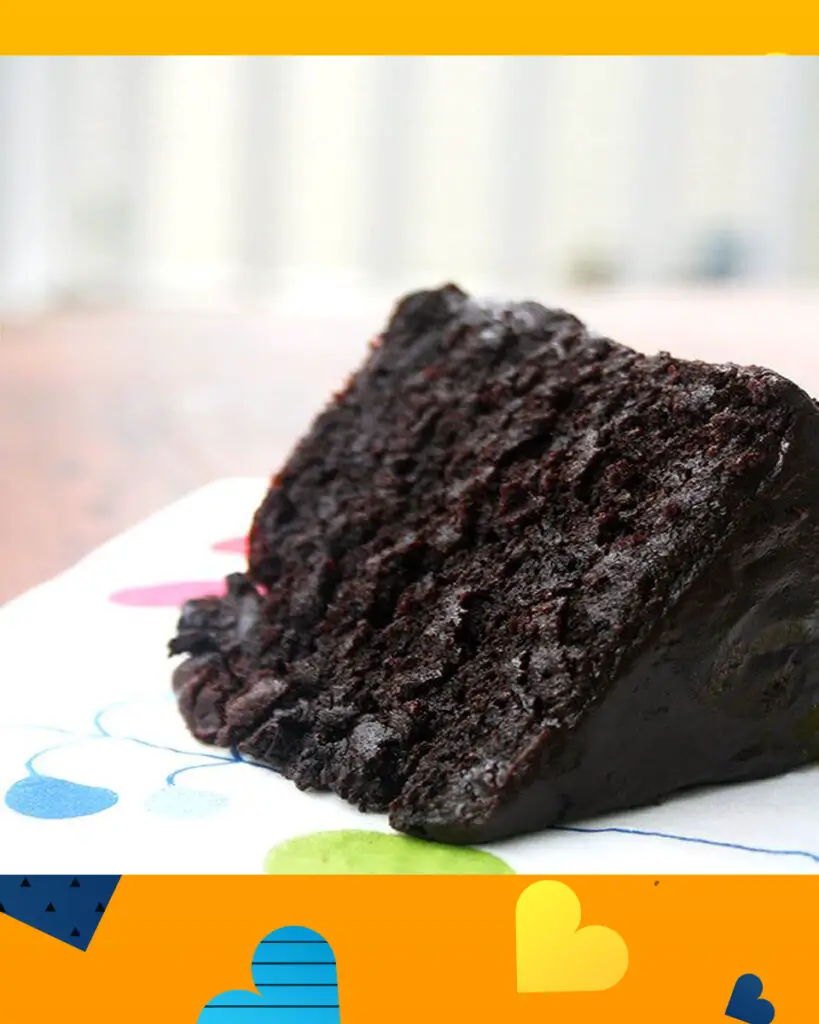
Black Buttercream Frosting Recipe
Ingredients:
- 1 cup (2 sticks) unsalted butter, at room temperature
- 4 cups confectioners’ sugar (powdered sugar), sifted
- 1/2 cup unsweetened cocoa powder (use high-quality cocoa powder for better flavor)
- 2-3 tablespoons heavy cream or whole milk
- 1 teaspoon pure vanilla extract
- Black food coloring gel or powdered activated charcoal (amount may vary, see instructions)
- A pinch of salt (optional, to enhance flavor)
Instructions:
- Prepare Your Ingredients:
- Ensure that your butter is at room temperature for easy mixing.
- Sift the confectioners’ sugar and cocoa powder together to remove any lumps.
- Cream the Butter:
- In a large mixing bowl, beat the softened butter with an electric mixer or stand mixer on medium-high speed until it’s creamy and pale in color. This typically takes 2-3 minutes.
- Incorporate the Dry Ingredients:
- Add the sifted confectioners’ sugar and cocoa powder to the creamed butter. Mix on low speed at first to prevent a sugar cloud, then increase the speed to medium. Continue mixing until the ingredients are well combined. Scrape down the sides of the bowl as needed.
- Adjust Consistency:
- With the mixer running, add 2-3 tablespoons of heavy cream or milk, along with the vanilla extract. This will help achieve a smooth and creamy consistency. Adjust the amount of cream to achieve your desired frosting texture.
- Coloring the Frosting:
- To achieve a deep black color, you can either use black food coloring gel or powdered activated charcoal. Start by adding a small amount of food coloring or charcoal and mix well. Continue adding more until the desired black color is reached. Be patient and add the coloring gradually to avoid overdoing it. Remember that the taste may be affected if you use too much food coloring, so use it sparingly.
- Taste and Adjust:
- Taste the frosting to ensure it’s sweet enough for your liking. If it’s not sweet enough, add more confectioners’ sugar in small increments until you reach the desired sweetness level. You can also add a pinch of salt to enhance the flavor, especially if you’re using unsalted butter.
- Final Mix:
- Once you’ve achieved the desired color and flavor, beat the frosting for an additional 2-3 minutes on medium-high speed to make it smooth and fluffy. This will also help incorporate air for a lighter texture.
- Use or Store:
- Your black buttercream frosting is now ready to use for decorating cakes, cupcakes, or other baked goods. If you’re not using it immediately, store it in an airtight container in the refrigerator. Before using it, allow it to come to room temperature, and give it a quick re-whip to restore its texture.
With this recipe, you can create a rich and flavorful black buttercream frosting that’s perfect for adding a dramatic touch to your baked creations. Adjust the sweetness and color to your preference, and enjoy the creative possibilities!
Nutrition information
The nutrition information for black buttercream frosting can vary depending on the specific ingredients used and the serving size. Here’s a general approximation for a typical serving of black buttercream frosting, based on the ingredients and quantities listed in the previous recipe:
Nutrition Information (Per Serving, approximately 2 tablespoons):
- Calories: 160-180 calories
- Total Fat: 9-10 grams
- Saturated Fat: 6-7 grams
- Trans Fat: 0 grams
- Cholesterol: 25-30 milligrams
- Sodium: 5-10 milligrams (if salt is added)
- Total Carbohydrates: 21-24 grams
- Dietary Fiber: 1-2 grams
- Sugars: 19-22 grams
- Protein: 0-1 gram
Please note that these values are approximate and can vary based on factors such as the specific brands of ingredients used and any variations in serving size. The primary sources of calories and fat in this frosting come from the butter and confectioners’ sugar, while the cocoa powder and any additional ingredients contribute to the overall nutritional profile.
It’s essential to consume frosting in moderation, as it is a high-calorie and high-sugar topping. Adjusting ingredient quantities or using alternative ingredients, such as reduced-fat butter or sugar substitutes, can impact the nutritional content of the frosting. If you have specific dietary requirements or are looking to reduce the calorie and sugar content, consider making substitutions or smaller portion sizes.
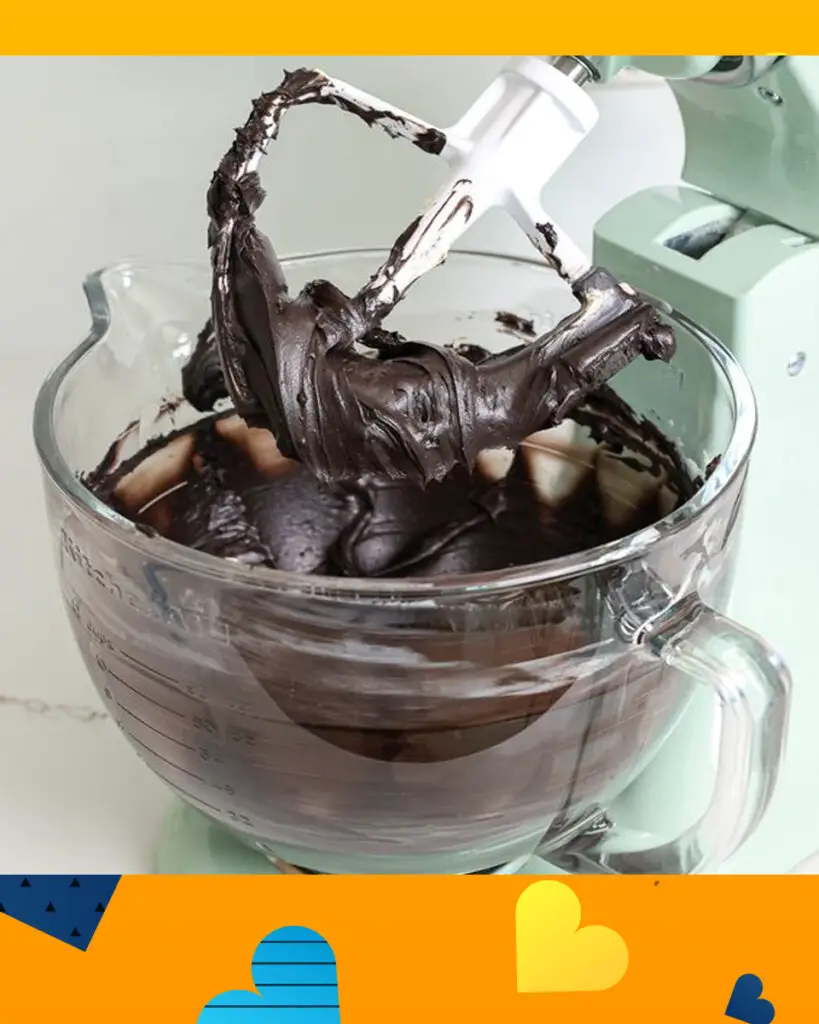
Tips to make perfect Black Buttercream Frosting
Creating perfect black buttercream frosting can be a bit challenging due to the intensity of the color and the potential for bitterness from food coloring or cocoa powder. Here are some tips to help you achieve the best results:
- Start with Room Temperature Ingredients: Ensure that your butter is at room temperature. This makes it easier to cream with the sugar and results in a smoother frosting.
- Sift Dry Ingredients: Sift the confectioners’ sugar and cocoa powder before adding them to the butter. This helps remove lumps and ensures a smoother frosting.
- Gradually Add Ingredients: When adding confectioners’ sugar, cocoa powder, and food coloring, do so gradually. Start mixing on low speed to prevent a mess and then increase the speed as needed.
- Use High-Quality Ingredients: Opt for high-quality cocoa powder and food coloring. Lower-quality ingredients can impact both flavor and color.
- Consider Natural Coloring Alternatives: If you’re concerned about the taste of food coloring, explore natural alternatives like activated charcoal for coloring. Remember to use food-grade activated charcoal.
- Adjust Sweetness: Taste the frosting as you go along and adjust the sweetness to your liking by adding more confectioners’ sugar if needed.
- Texture Control: To control the texture, gradually add small amounts of heavy cream or milk. This will help you achieve the desired consistency – whether for piping or spreading.
- Be Patient with Coloring: Achieving a deep black color may require patience. Add food coloring gradually and mix well before adding more. Overdoing it with food coloring can affect the taste and texture negatively.
- Refrigeration and Re-whipping: If your frosting becomes too soft, you can refrigerate it briefly to firm it up before using it. Be sure to bring it back to room temperature and re-whip for a smooth texture.
- Storage: Store any unused frosting in an airtight container in the refrigerator. It can typically be stored for up to a week. Before using it, let it come to room temperature and re-whip to restore its consistency.
- Practice Piping Techniques: Practice your piping techniques on parchment paper or a separate surface before decorating your baked goods. This helps you get comfortable with the frosting consistency and ensures smoother decorating.
- Consider Alternatives: If you’re finding it challenging to achieve the desired black color without bitterness, you can also explore alternative frosting options, like dark chocolate ganache or pre-made black frosting.
Remember that making perfect black buttercream frosting might take some practice. Don’t be discouraged by initial attempts, and be willing to adjust ingredients and techniques to suit your preferences. With patience and experimentation, you can create stunning and delicious black buttercream frosting for your baked creations.
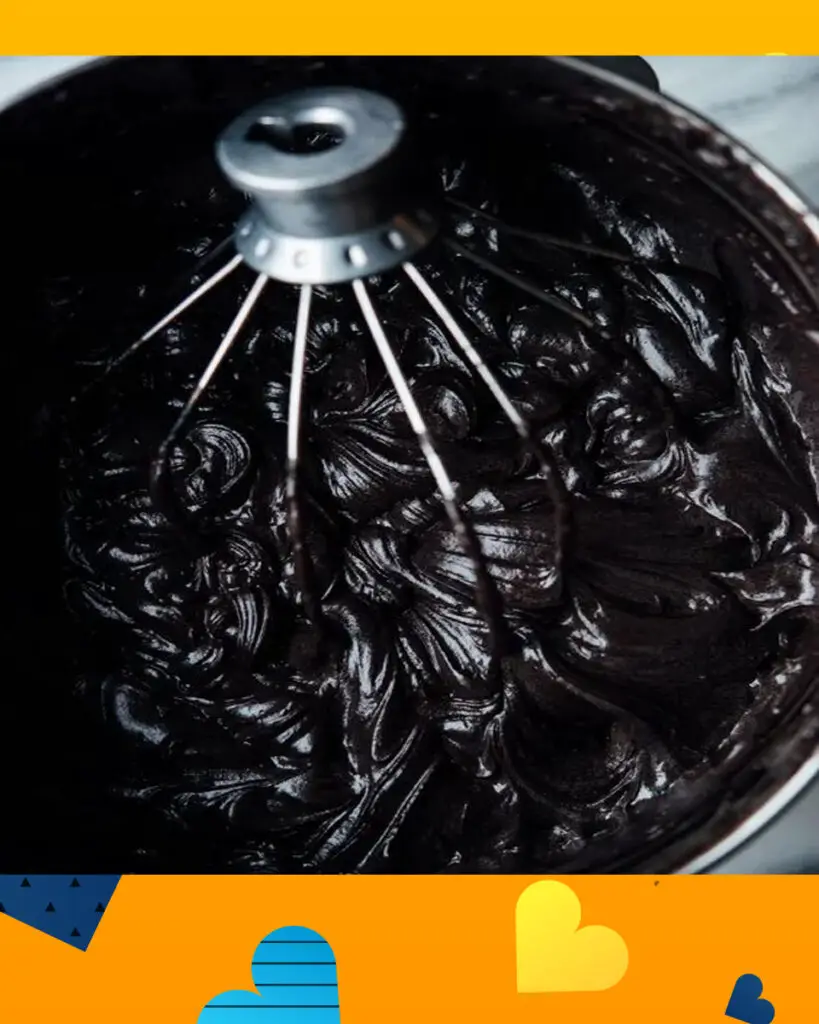
How to serve
Serving black buttercream frosting can be an exciting and visually striking experience. Here are some ideas and tips for serving desserts with black buttercream frosting:
- On Cakes:
- Black buttercream frosting is often used to decorate cakes, creating a dramatic and elegant look. Serve slices of cake with the frosting artfully piped or spread on top. Consider using contrasting decorations like colorful edible flowers, metallic sprinkles, or white chocolate shavings for a stunning visual effect.
- On Cupcakes:
- Cupcakes with black buttercream frosting make for eye-catching individual treats. Arrange them on a dessert table or cupcake stand for a striking presentation at parties, weddings, or special occasions.
- As a Filling:
- Black buttercream frosting can also be used as a filling between cake layers. It adds both flavor and a bold visual contrast to the cake.
- In Themed Desserts:
- Incorporate black buttercream frosting into themed desserts for events like Halloween or gothic-themed parties. It’s perfect for creating spooky or mysterious dessert designs.
- With Themed Decorations:
- Coordinate your black buttercream frosting with themed decorations. For example, pair it with silver or gold accents for an elegant look, or use it as a backdrop for vibrant, colorful decorations to create a visually stunning contrast.
- Dessert Bars:
- Set up a dessert bar or dessert buffet with a variety of sweets decorated with black buttercream frosting. This allows guests to choose their favorites and enjoy the dramatic presentation.
- Custom Designs:
- Use black buttercream frosting to create custom designs and patterns on your desserts. Whether it’s writing messages, drawing intricate patterns, or making unique shapes, the dark canvas of black frosting provides endless creative possibilities.
- Combining Flavors:
- Pair the black buttercream frosting with complementary flavors. For instance, chocolate cake or cupcakes work well with the rich, dark flavor of black frosting, but you can also experiment with flavors like coffee, raspberry, or mint for a unique twist.
- Gothic or Elegant Themes:
- Consider using black buttercream frosting for events with gothic or elegant themes. It can be a focal point in a dessert spread, adding sophistication and intrigue to the overall presentation.
- Individual Portions:
- Serve black buttercream frosting in individual dessert cups or shooters. Layer it with cake crumbles or cookie crumbs for a deconstructed dessert.
- Inform Guests:
- If your black buttercream frosting contains any natural ingredients like activated charcoal, it’s a good idea to inform your guests about its inclusion, especially if you’re serving it at a gathering or event.
When serving desserts with black buttercream frosting, pay attention to the overall aesthetics and ensure that the presentation aligns with the theme and occasion. Don’t forget to provide utensils or napkins if necessary, and consider offering a variety of dessert options to cater to different tastes and preferences.
How to store
Properly storing black buttercream frosting is crucial to maintain its freshness and prevent it from spoiling. Here are steps on how to store black buttercream frosting:
1. Airtight Container: Transfer the black buttercream frosting into an airtight container. You can use a plastic or glass container with a tight-fitting lid. Make sure there is as little air as possible in the container to prevent the frosting from drying out or forming a crust.
2. Surface Smoothness: Before sealing the container, ensure the surface of the frosting is as smooth as possible. Use a spatula to level it and remove any air bubbles. You can also lightly press plastic wrap directly onto the surface of the frosting to create a barrier that helps prevent drying.
3. Refrigeration: Store the container of black buttercream frosting in the refrigerator. Butter-based frostings are perishable due to the dairy content, and refrigeration will help keep it fresh for a longer period.
4. Label and Date: It’s a good practice to label the container with the date you made the frosting. This makes it easier to keep track of its freshness and ensures you use it within a reasonable timeframe.
5. Prevent Odor Transfer: Keep the frosting away from strongly scented foods in the refrigerator to prevent any unwanted flavor or odor transfer. Consider using an airtight container that helps isolate the frosting from other items.
6. Bring to Room Temperature: Before using the frosting, allow it to come to room temperature. Cold frosting can be too stiff for spreading or piping, and bringing it to room temperature will make it more workable.
7. Re-whip If Needed: After storing, you may need to re-whip the frosting to restore its smoothness and consistency. Use a stand mixer or hand mixer on low speed until the frosting reaches the desired texture.
8. Storage Duration: Black buttercream frosting can typically be stored in the refrigerator for up to a week. After that, it may start to lose its freshness and may develop an off flavor or texture. If you need to store it for longer, consider freezing it.
Freezing Option (Long-Term Storage): If you want to store black buttercream frosting for an extended period, you can freeze it:
1. Portion into Smaller Batches: Divide the frosting into smaller portions based on your future needs. Smaller portions are easier to thaw and use.
2. Wrap and Seal: Place each portion in an airtight freezer-safe container or wrap it tightly with plastic wrap. Ensure that the wrap or container is airtight to prevent freezer burn.
3. Label and Date: Label each portion with the date and any relevant details.
4. Freeze: Store the frosting in the freezer. It can generally be stored for up to 1-2 months without significant loss of quality.
5. Thaw and Re-whip: When you’re ready to use the frozen frosting, transfer it to the refrigerator and allow it to thaw overnight. After thawing, re-whip the frosting to restore its texture and consistency.
Remember that while freezing preserves the frosting for a more extended period, it can affect the texture slightly. However, re-whipping usually helps restore its smoothness, making it suitable for decorating and serving.
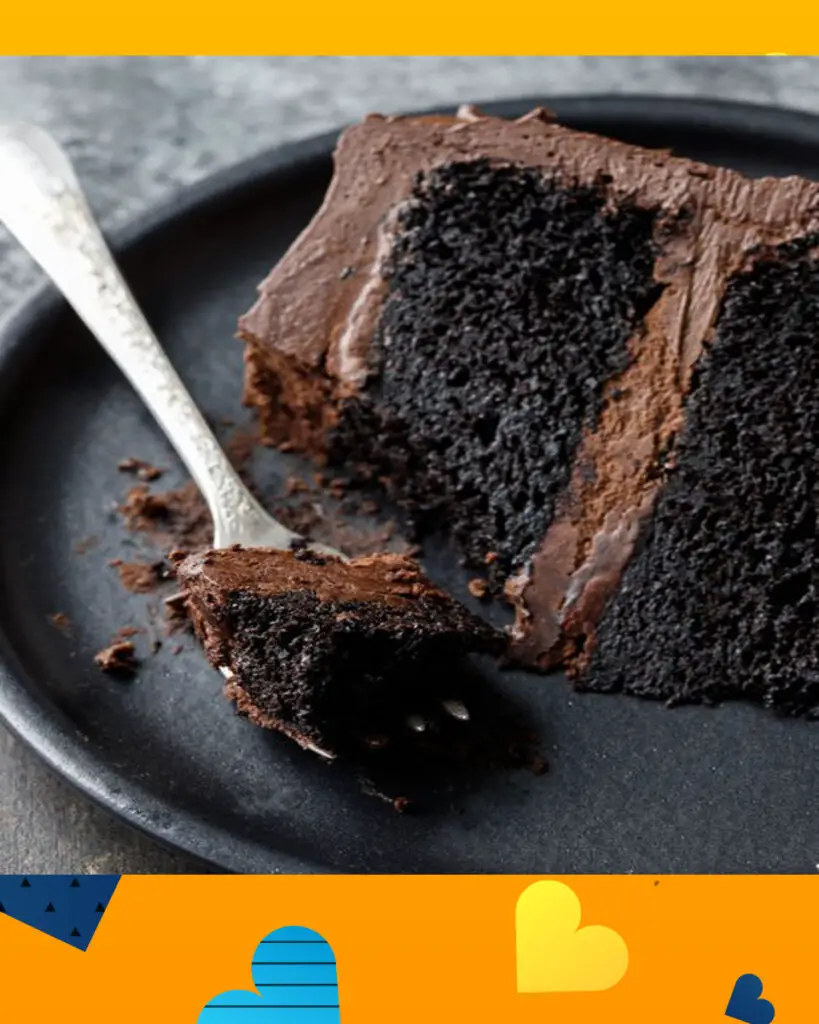
FAQ’s about Black Buttercream Frosting
Q1: How can I achieve a deep black color in my buttercream frosting? A1: Achieving a deep black color can be a bit challenging because adding too much food coloring can alter the consistency and taste of the frosting. To achieve a deep black color, start with a chocolate buttercream base (using cocoa powder) and then add black food coloring gradually until you reach the desired shade. Gel or powdered food coloring tends to work better than liquid food coloring as it won’t dilute the frosting.
Q2: My black buttercream frosting tastes bitter. How can I fix this? A2: The bitterness might be due to the black food coloring or cocoa powder. To balance the bitterness, you can add more sugar to sweeten the frosting. Alternatively, try using a different brand of food coloring or cocoa powder known for its milder flavor. Taste-testing as you go along can help you adjust the sweetness.
Q3: Why does my black buttercream frosting have a grainy texture? A3: A grainy texture can result from undissolved sugar or overmixing. Ensure that you sift your confectioners’ sugar before adding it to the butter, and mix just until the ingredients are combined. Overmixing can cause the butter to separate from the sugar, resulting in a grainy texture.
Q4: Can I use natural ingredients like activated charcoal to color my frosting black? A4: Yes, you can use natural ingredients like activated charcoal to achieve a black color. Be sure to use food-grade activated charcoal and start with a small amount, gradually adding more until you reach the desired color. Activated charcoal can also have a slightly earthy taste, so consider your flavor preferences.
Q5: My black buttercream frosting is too thin. How do I thicken it up? A5: If your frosting is too thin, you can thicken it by adding more confectioners’ sugar, a tablespoon at a time, until you achieve the desired consistency. Alternatively, refrigerate the frosting for a short period to firm it up before using it for decorating.
Q6: Can I make black buttercream frosting in advance? A6: Yes, you can make black buttercream frosting in advance and store it in an airtight container in the refrigerator for up to a week. Before using it, allow it to come to room temperature and re-whip it to restore its smooth consistency.
Q7: Why is my black buttercream frosting turning gray over time? A7: Black buttercream frosting can sometimes appear gray as it sits due to exposure to air and light. To prevent this, store it in an airtight container away from direct sunlight. If it does turn gray, you can often restore the black color by re-whipping the frosting.
Q8: Can I freeze black buttercream frosting? A8: Yes, you can freeze black buttercream frosting for up to 1-2 months. To thaw it, place it in the refrigerator overnight and then re-whip it to restore its texture before using.
Remember that achieving the perfect black buttercream frosting may take some practice, so don’t be discouraged if it doesn’t turn out perfectly the first time. Adjustments can be made to suit your taste and the specific requirements of your dessert decoration.
Happy baking!
